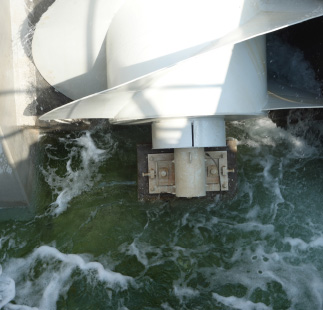Wastewater is the water that comes from homes and businesses through sewer lines or after a septic tank is pumped. It’s the water from toilet flushes, showers, washing machines, sinks, and dishwashers. As wastewater is filled with fecal matter, urine, household or commercial cleaners, soaps/shampoos, etc., it has to be treated before it can return to water sources or public water supplies.
While this is something wastewater treatment plants do every hour of the day, there are things that homeowners may not think of. Wastewater treatment can only do so much. Three items come from homes and businesses that are very difficult to fully remove from water.
#1 – Pharmaceuticals and Personal Care Products (PPCPs)
Both prescription and over-the-counter medications and supplements are wreaking havoc on wastewater. Even if people dispose of their unused medications correctly, some of those medications make their way into the urine stream. That urine ends up in a water treatment plant where the medications do not fully get removed. One study found that antibiotics and synthetic hormones (birth control) were being found in water sources and the fish living in those rivers and lakes.
It’s found that a secondary wastewater treatment process is still only able to remove a maximum of 95% of the estrogen. Antibacterial soaps that contain triclocarban are even worse. Scientists found that only 25% of the triclocarban in wastewater was removed by the end of the process. Not only are these drugs and chemicals ending up in bodies of water, but there is also the chance that trace amounts are in the water that goes back to homes and businesses. There are concerns that this may increase antibiotic resistance.
Many water treatment plants do not have the equipment needed to test for PPCPs. While scientists say trace amounts are not likely to pose a health risk, there still are questions regarding how to make sure a wastewater treatment plant removes as many PPCPs as possible. Systems with filtration and biological treatments are the best way to remove PPCPs. Older wastewater treatment plants could upgrade to help remove as many drugs and chemicals as possible.
#2 – Nitrites and Nitrates
Nitrates are used as a food additive in many cured meats. People consume them regularly in deli meats, bacon, sausage, and hot dogs. As the body’s bacteria break down those foods, they convert to nitrite. Nitrites are incredibly harmful to bodies of water as they deplete oxygen and increase algae growth.
A wastewater treatment plant has to remove ammonia from the water it’s treating. Do do this, autotrophic ammonia-oxidizing bacteria help oxidize the ammonia, which leads to nitrite. The nitrite is then oxidized using nitrite-oxidizing bacteria, which turns it into nitrogen gas. It all takes energy to run the machines needed to complete the process. At that point, sludge is removed. There’s another process that uses anaerobic ammonia oxidation that cuts out a step. It’s effective and energy-efficient and by the end of it, only a small percentage of that ammonia has been converted to nitrate that gets converted to nitrogen gas.
#3 – Polyethylene and Polypropylene Microbeads
As early as 1972, plastic microbeads started popping up in many products. These tiny plastic beads gained popularity in facial scrubs, body washes, and other products used to buff away dead skin. They were even added to some toothpaste brands. As they are plastic, they don’t break down. The tiny particles of plastic get through water treatment and often end up in large bodies of water where fish and other aquatic creatures ingest or breathe them in. For this reason, the U.S. Government banned plastic microbeads starting in 2017. Manufacturers had to stop using plastic microbeads in their products from that point on.
Despite the ban, people were still able to buy the products containing polyethylene and polypropylene microbeads from retailers and discounters who still had the products in their warehouses. Not everyone understands the danger these plastic pellets pose to the environment. They’re still using them, which means those pellets that can be a fraction of a millimeter in size ends up in a water treatment plant. Wastewater treatment plants that use primary clarification have better success rates at removing microbeads, but the removal rate is still only an average of 87%. Some microplastics still get through.
Let Lakeside Equipment help you upgrade or install a wastewater treatment system that does as much as possible to remove these three difficult contaminants from the water you treat. Our wastewater treatment systems are designed for efficiency and automation. We’re happy to help you with everything you need from screening and trash rakes to grit collection and clarification. Give us a call and let us help you design cost-effective solutions.








